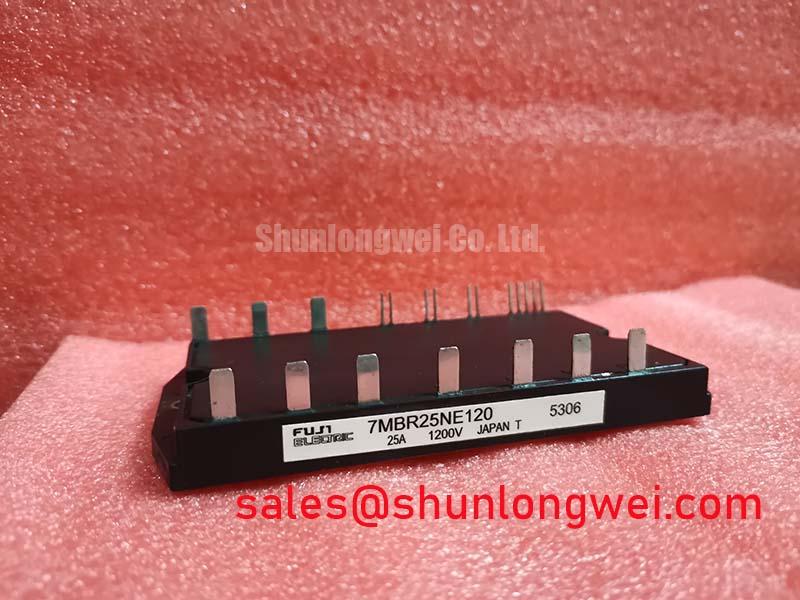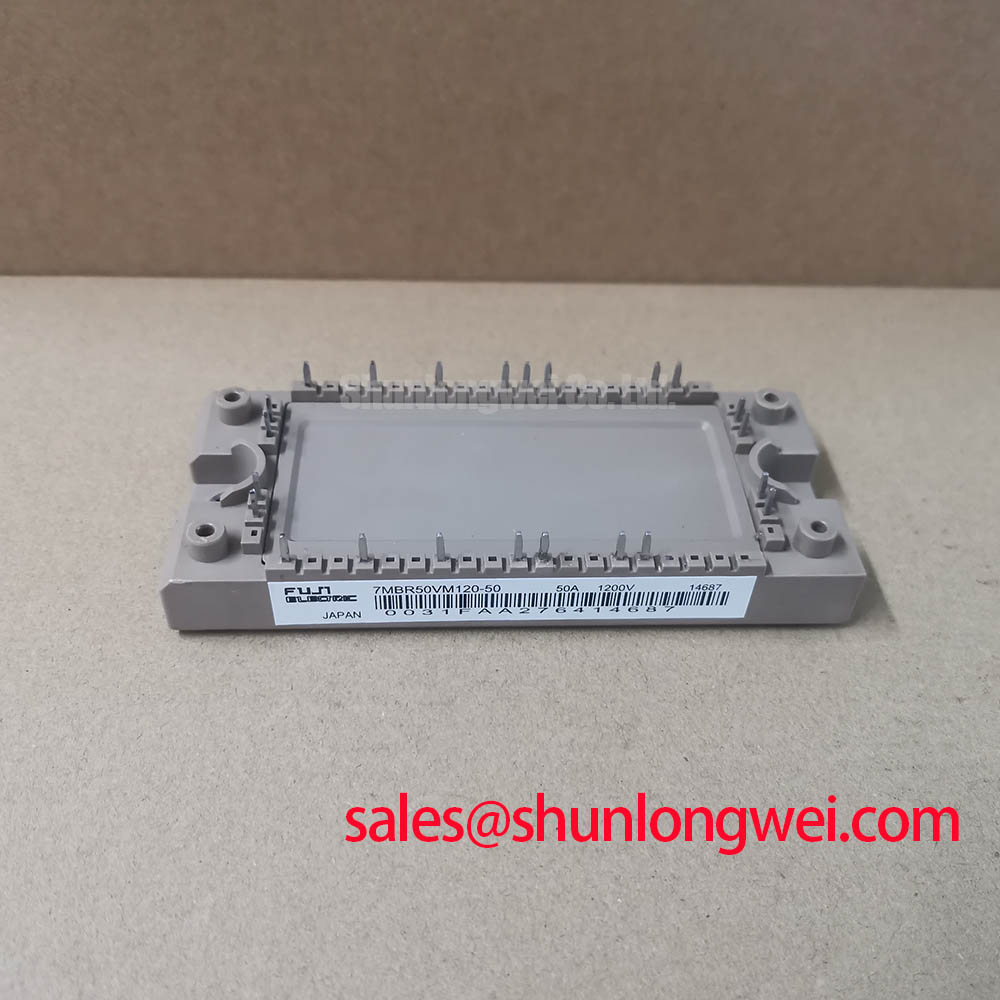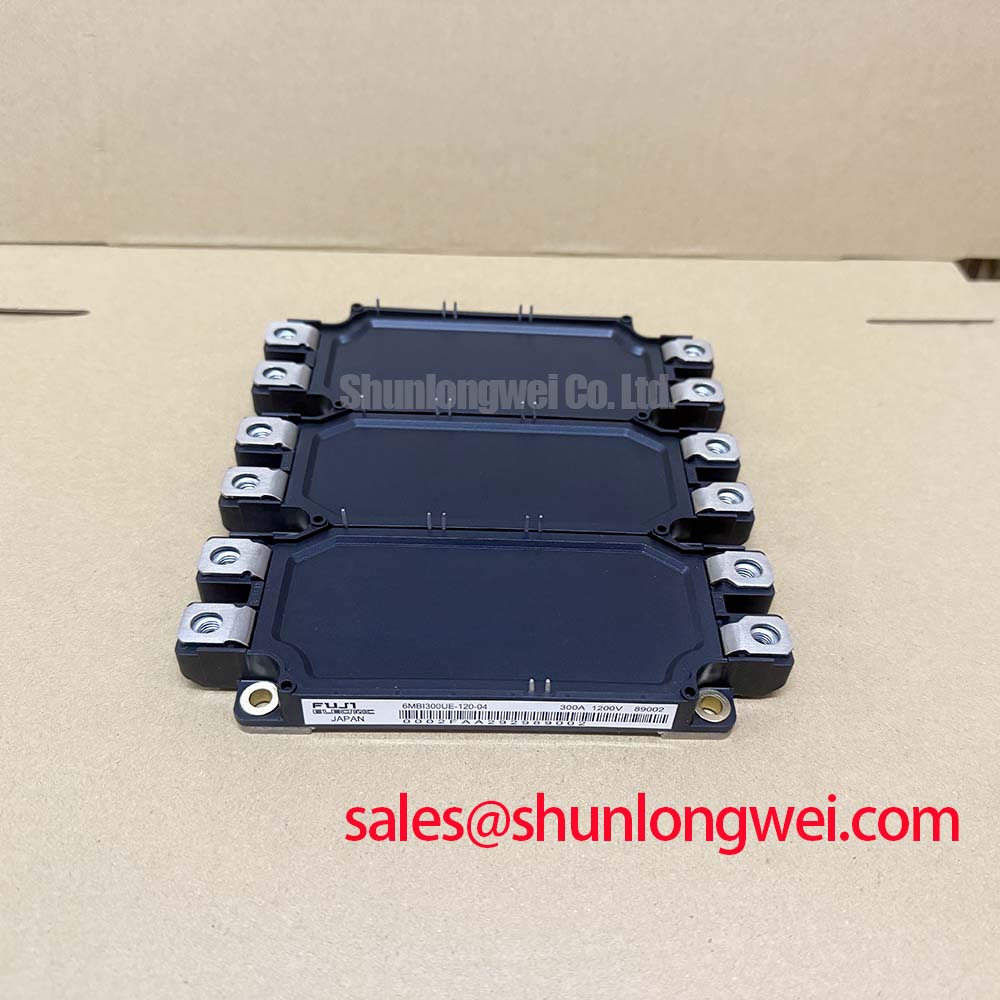Content last revised on November 20, 2025
Fuji Electric 7MBR25NE120: An Engineer's Guide to this 7-in-1 IGBT Module
Introduction: Integrated Power for Compact Motor Drives
The Fuji Electric 7MBR25NE120 is a highly integrated Power Integrated Module (PIM) designed to streamline the power stage of compact inverter systems. This 1200V | 25A | PIM combines a three-phase converter, a brake chopper, and a three-phase inverter into a single, low-inductance package. Its key benefits include simplified assembly and enhanced thermal efficiency. The module directly addresses the engineering need for reducing component count and simplifying thermal management in low to medium-power motor drives. For AC servo drives requiring a balance of performance and footprint, the 7MBR25NE120's integrated design offers a compelling solution.
Application Scenarios & Value
System-Level Benefits in Compact Motion Control Systems
The 7MBR25NE120 is engineered for applications where space, assembly efficiency, and reliability are critical design constraints. Its primary value lies in its 7-in-1 integration, which consolidates the rectifier, brake, and inverter functions. This makes it an excellent fit for small AC motor drives, servo amplifiers, and the power conversion units of compact Uninterruptible Power Supplies (UPS). The integrated nature of the module significantly reduces the parasitic inductance that can cause voltage overshoots in discrete designs, a critical factor for reliable operation at high switching speeds. The on-board NTC thermistor provides essential real-time temperature feedback, allowing for precise thermal management and overload protection, a key requirement in closed-loop servo systems. While the 7MBR25NE120 is rated for 25A, systems demanding higher current capability for larger motors might consider the related 7MBR50SB120-50, which offers a 50A rating within a similar integrated topology.
Key Parameter Overview
Decoding the Specs for Efficient Power Conversion
The specifications of the 7MBR25NE120 are tailored for efficiency and robust performance in typical industrial voltage systems. The parameters below highlight its suitability for controlled, high-speed switching applications.
| Parameter | Symbol | Value | Conditions |
|---|---|---|---|
| Collector-Emitter Voltage | Vces | 1200V | Vge=0V |
| Continuous Collector Current | Ic | 25A | Tc=80°C |
| Collector-Emitter Saturation Voltage | Vce(sat) | 2.7V (Typ) | Ic=25A, Vge=15V |
| Total Power Dissipation | Pc | 125W | Tc=25°C, per IGBT |
| Forward Voltage (FWD) | Vf | 2.5V (Typ) | If=25A, Vge=0V |
| Operating Junction Temperature | Tj | -40 to +150°C | Under switching |
Download the 7MBR25NE120 datasheet for detailed specifications and performance curves.
Intra-Series Comparison & Positioning
Defining its Role within the Fuji Electric PIM Portfolio
The 7MBR25NE120 carves out a specific niche within the broader Fuji Electric portfolio of Power Integrated Modules. While sharing the 1200V blocking voltage common to many industrial modules, its 25A current rating positions it for lower-power applications, typically in the 2.2 kW to 7.5 kW range, depending on the specific switching frequency and cooling strategy. It serves as a foundational building block for designers who need a fully integrated front-end and inverter but do not require the higher current handling of modules like the 50A 7MBR50-series or the 75A 7MBR75-series. The key differentiator is its balance of integration and power, offering a cost-effective and compact solution that avoids the over-specification inherent in using a higher-current module for a lower-power task. This makes it an optimal choice for standardizing a power platform across a range of smaller motor sizes, simplifying inventory and procurement.
Frequently Asked Questions (FAQ)
What is the primary benefit of the 7MBR25NE120's 7-in-1 configuration?
Its main advantage is system simplification. By integrating the input rectifier, brake chopper, and output inverter into one module, it reduces PCB complexity, minimizes assembly time, and lowers the overall parasitic inductance, which contributes to cleaner switching and improved reliability.
How does the Vce(sat) of 2.7V impact system design?
The collector-emitter saturation voltage is a direct indicator of conduction losses. A typical Vce(sat) of 2.7V at its rated current of 25A is a critical parameter for thermal calculations. Engineers must factor this value into their heatsink design to ensure the junction temperature remains within the safe operating area, especially in applications with high duty cycles or ambient temperatures.
Is an external gate driver required for the 7MBR25NE120?
Yes, an external gate drive circuit is necessary. The module contains the power switches (IGBTs and diodes) but requires an isolated gate driver to provide the correct voltage levels (+15V/-Vge) and current to turn the IGBTs on and off efficiently and safely.
What is the function of the integrated NTC thermistor?
The built-in NTC (Negative Temperature Coefficient) thermistor provides a means for real-time temperature monitoring of the module's substrate. This feedback is crucial for implementing over-temperature protection in the drive's control logic, preventing thermal runaway and enhancing the long-term reliability of the entire system.
Can this module be used for applications other than motor drives?
Absolutely. While optimized for motor control, its integrated topology is also well-suited for other power conversion applications, such as industrial power supplies, welding equipment, and small-scale solar inverters where a three-phase AC input needs to be converted and controlled.
Strategic Implications for Power System Design
Adopting a highly integrated module like the 7MBR25NE120 represents a strategic shift from discrete component design towards platform-based engineering. This approach allows design teams to accelerate development cycles and reduce the qualification effort required for multiple individual components. By leveraging a pre-validated power stage, engineers can focus resources on higher-level control algorithms, user interface, and system connectivity, thereby increasing the overall value of the end product. This modular strategy is fundamental to achieving faster time-to-market and enhancing manufacturing scalability in competitive industrial markets. For further reading on the evolution and impact of these components, explore this guide on the role of IGBT modules in modern power systems.













